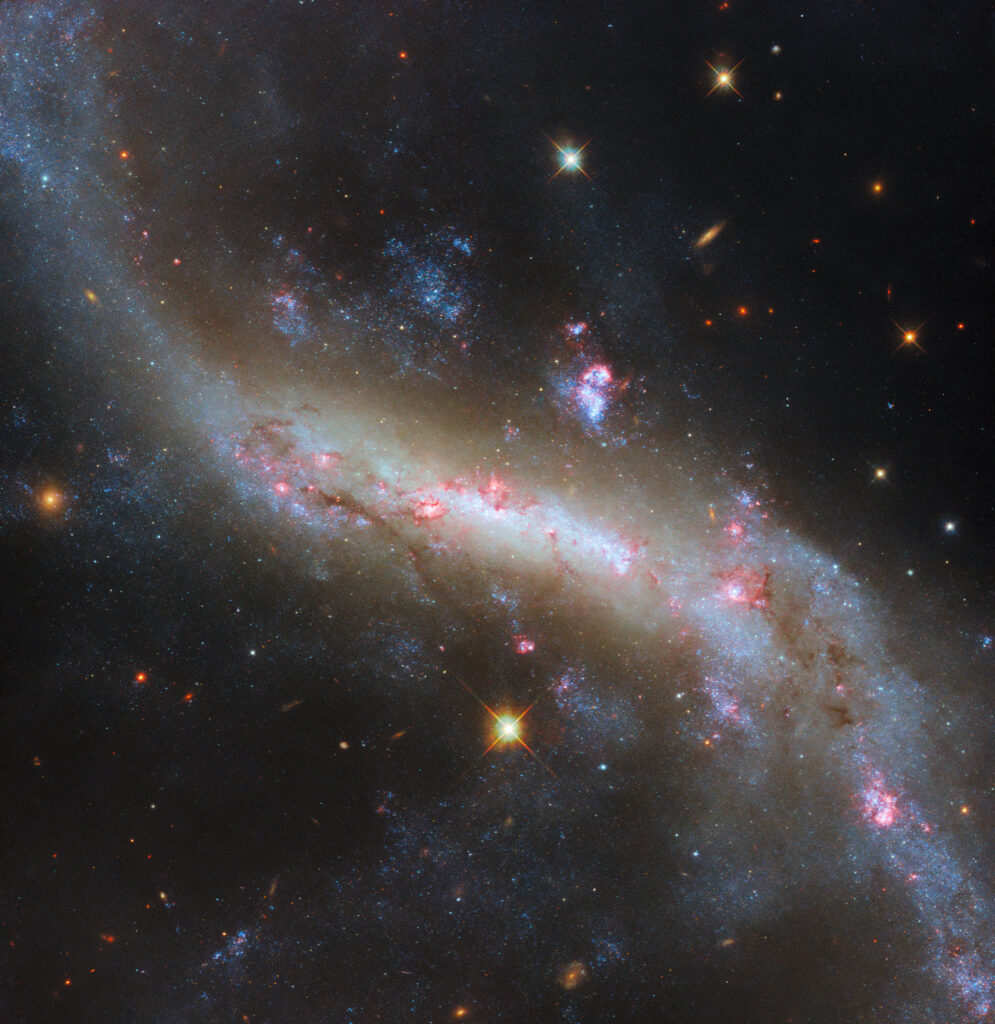Astronomers working with the Hubble telescope have published a new image. The galaxy NGC 4731 can be seen on it.

NGC 4731 is located 43 million light-years from Earth and is part of the Virgo cluster, consisting of about 1,300 galaxies. Its image was obtained using six different filters. It shows swirling clouds of gas, dark dust bands, bright pink regions of active star formation and, of course, a long bar with spiral arms extending from it.
In astronomy, a bar is an elongated structure of stars and gas in a galactic disk. As a rule, it is associated with spiral galaxies (their arms grow from it), but it can also be present in lenticular and irregular galaxies. Spiral galaxies with a bar outnumber both ordinary spirals and elliptical galaxies combined, accounting for about 60% of all galaxies. Our Milky Way also has such a structure.
According to astronomers, the bar is formed when the orbits of stars and gas in the galaxy line up, forming a dense region into which individual stars enter and exit over time. This is the same process that supports the spiral arms of the galaxy, but for bars it is somewhat more mysterious. Spiral galaxies seem to form bars at their centers as they mature, which explains the large number of such structures that we observe today. But at the same time, they can lose them later when the accumulated mass along the bar becomes unstable. It is also believed that bars can play the role of a kind of fuel pipelines, supplying gas to the galactic center, which contributes to star formation.
When looking at the Hubble photo, you can notice that the spiral arms of NGC 4731 extend far beyond the galactic bar. Most likely, the outstretched “arms” of the galaxy are the result of gravitational interaction with neighbors in the Virgo cluster.
According to EsaHubble


